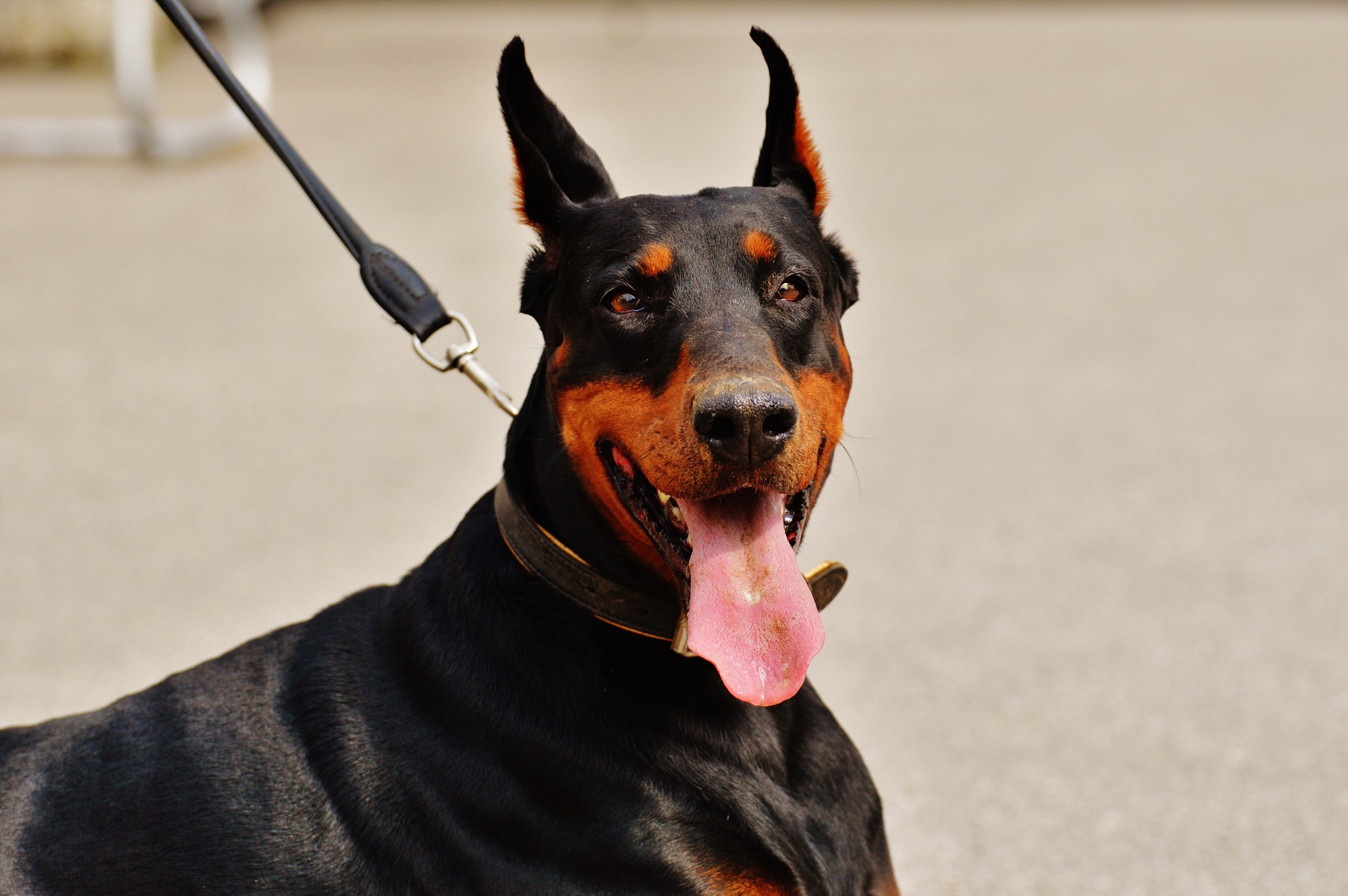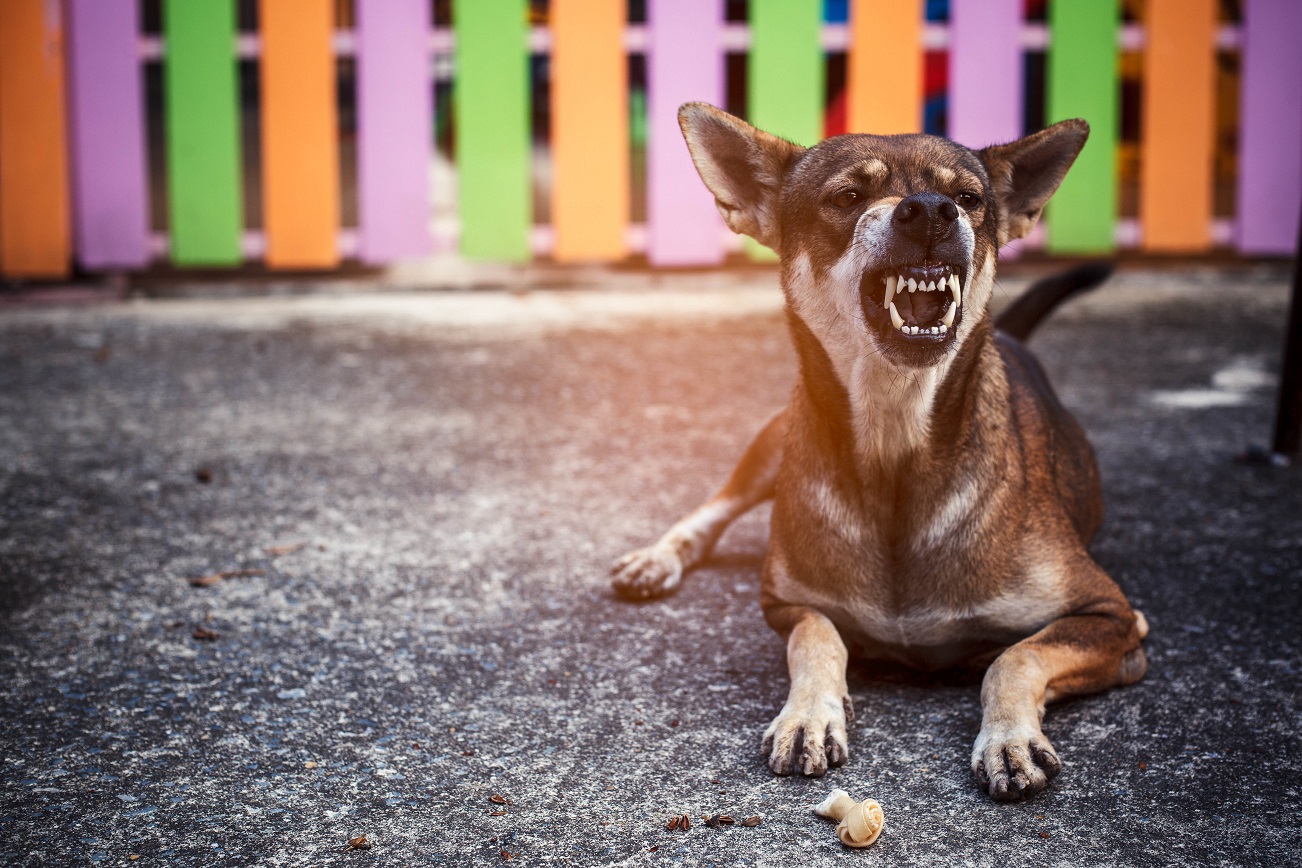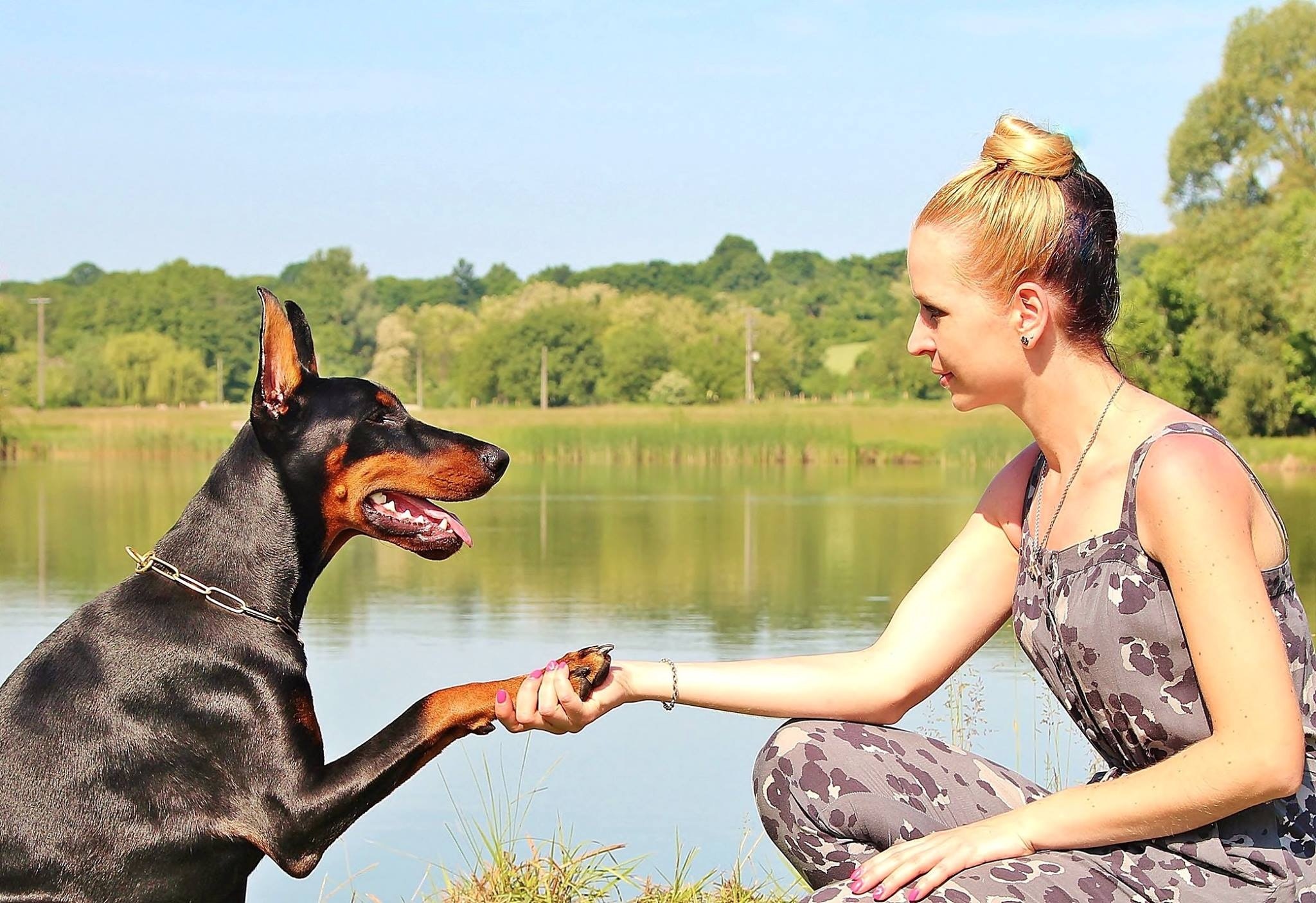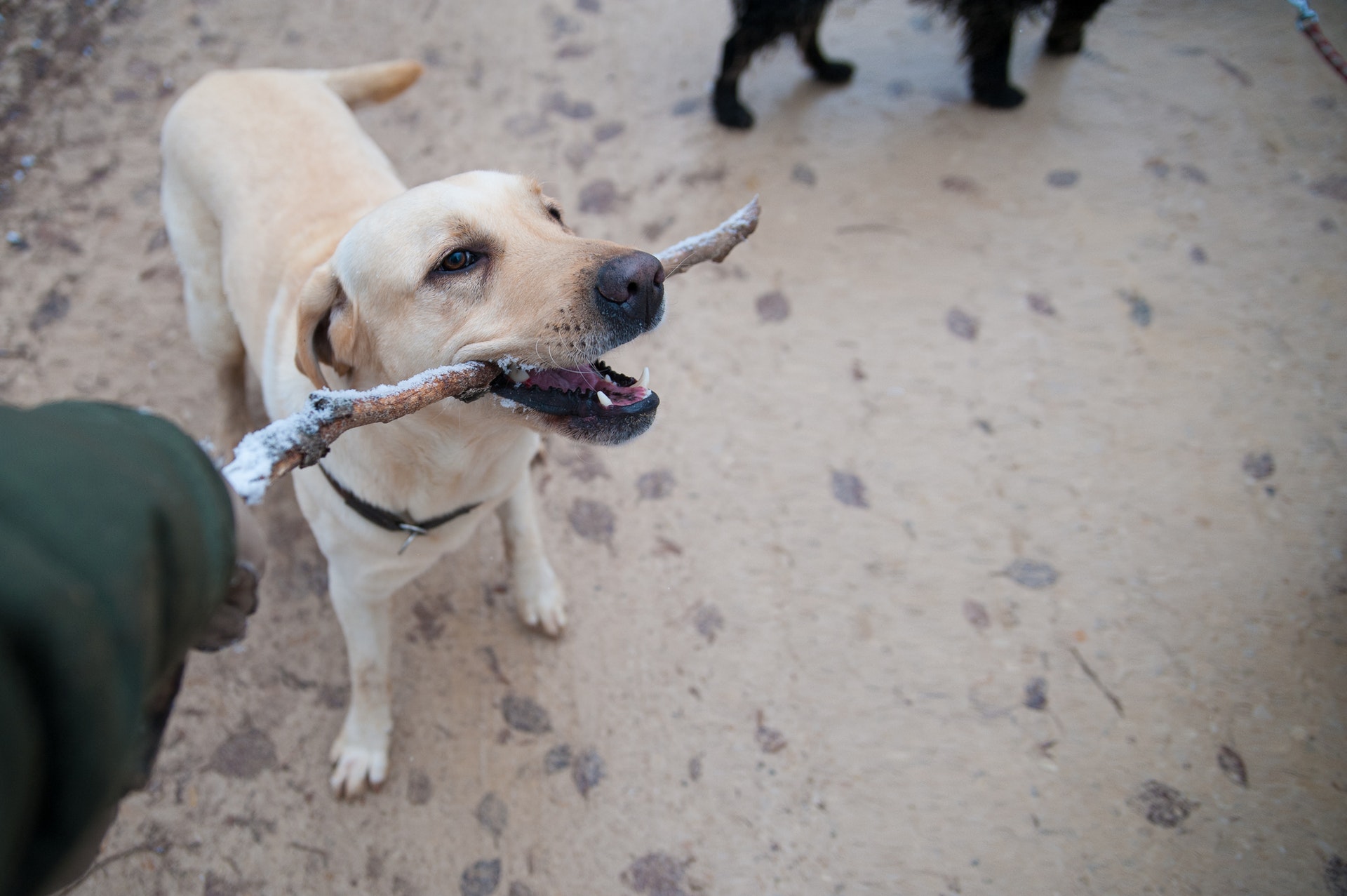If you’ve ever uttered the phrase “my dog is aggressive towards me but not my husband” then this is the most important page you’re ever going to read.
It’s hard to admit sometimes, but we don’t live in the perfect world. And while we’d all love nothing more than to be BFFs with our furry friends until the end of time. Unfortunately, it’s not always going to be the case for every owner.
Ultimately, dogs display aggression for different reasons, most of which are driven by their everyday surroundings.
And although some dogs may naturally favor a particular member of the family over others (in this case, your husband), it’s NOT impossible to bring your dog’s aggression to an end with the right plan of action.
Thankfully, there is light at the end of the tunnel. Because while this type of behavior can be troubling (especially when you’re the only victim), there is something you can do to calm the aggressive tendencies in your dog.
To kick things off, I’d first recommend taking a look at the quick video below from Dan Abdelnoor (aka Doggy Dan) over at The Online Dog Trainer.
During the video, Dan reveals what to do, but more importantly, what NOT to do when it comes to eliminating your dog’s aggression towards you.
So watch the video, implement the training Dan recommends, and you’ll see a marked improvement in your dog’s ability to remain calm in any situation that usually triggers their aggression.
Anyway, here’s the link to the video to take a look: Click Here To Visit The Online Dog Trainer & Discover How To Finally Stop Your Dogs Unwanted Aggression… Even If You’ve Tried & Failed Before!
(Video will open in a new window)
Why Is My Dog Aggressive Towards Me But Not My Husband?
Your dog’s aggression towards you doesn’t necessarily mean that the dog wants to bite you.
Far from it…
Some dogs don’t show their aggression to this extent and instead opt to growl occasionally or attack other people or dogs.
If you want to remedy this issue, it’s important first to understand the possible triggers. Because aggression is a behavioral problem, it’s something that can be corrected, although it might take some patience.
There are many different reasons why your dog might be aggressive, but some of the more common reasons include…
Fear Aggression
One of the most common reasons your dog might display signs of aggression towards you is fear.
Some of the most common causes of this fear include negative experiences in the past, neglect, and lack of proper socialization.
In serious cases, it can even be a result of the owner being abusive.
When a dog finds itself in a situation where aggression is the only way out.
For instance, when encountered by a scary situation. It usually won’t hesitate to attack.
Unlike other attacks, a dog that’s defending itself due to fear usually doesn’t show any warning sign.
These include baring its teeth, snarling or growling right before they attack.
Injury or Illness
Another reason for aggression among dogs is illness or injury, which causes your pet to experience pain, stress, and discomfort.
This is especially true if your dog has never shown any aggressive behavior in the past. So if you notice all of a sudden biting, snapping, or growling, then there’s a likelihood that it is sick.
The most common causes of this pain include internal injuries, lacerations, bone fractures, arthritis, and numerous tumors.
Some infections affect your dog’s brain causing it to exhibit signs of aggression towards you.
Examples of such conditions include brain infection, tumors, or cognitive dysfunction.
This usually happens across dogs of all ages but is mostly experienced in older dogs.
If you suspect the reason for your dog’s aggression to be an illness. It’s advisable to consult a veterinary instead of giving it pain-relieving medication.

Leash Aggression
This type of aggression is also referred to as barrier or redirected aggression and can be caused by your dog being behind a chain-link fence or always leashed.
Because its attempts to get something of interest are futile due to the leash, the dog gets frustrated.
As a result, even a normally calm dog and docile would resort to taking out in frustrations in another way, such as being aggressive towards you and bite you.
Possessive Aggression
It is also known as resource guarding and is a kind of aggression a dog shows when it’s possessive to a particular item.
This may be their bed, a toy, food, or anything else it cherishes.
The dog immediately starts showing signs of aggression once you start approaching the object it values, perceiving you to be an intruder.
Possessive aggression varies from one dog to another and can even depend on the item.
A good example of this is your dog not acting up if you pet it while chewing their favorite toy. In contrast, it may snap and growl at you if you attempt to take hold of its bowl.
Your dog’s reaction will differ from a snarling, growling, or an all-out attack and biting you depending on how much it cherishes the object.
Anxiety Aggression
Like humans, dogs take time to adapt to a change in their environment. A change of scenery usually makes them anxious.
As a result of this, they end up showing signs of aggression.
Various things might make your dog anxious and aggressive, including moving into a new house or a new family member’s arrival.

But Why Is My Dog Specifically Aggressive Towards Me But Not My Husband?
Now that you know the different reasons behind dogs’ aggression, it’s time to understand why your dog is aggressive towards you but not your husband.
Some of the possible reasons for this include…
Showing Signs Of Dominance
Dogs are, by nature, dominant and social creatures functioning in packs.
This goes to show that your dog might have, over time, realized the hierarchy in your household.
Something you might not even be aware of.
Your dog’s aggressive nature is usually brought about by the need to show that control.
As a result, your dominant dog will unleash its aggression towards any other pet, you, or any other person who is considered below it in the household hierarchy.
This might go to explain why it isn’t showing signs of aggression towards your husband, such as growling or snarling.
In this case, it’s advisable if you learned how to be more assertive so that your dog considers you dominant, thereby not showing any signs of aggression.
Possessiveness
If your dog has a close attachment to your husband, it might become aggressive when it feels you’re getting too much attention.
In this situation, it sees you as trying to steal its valuable possession. And as a result, might start acting up and becoming aggressive.
If this happens, it’s best to back up since it can easily bite you.
(Video will open in a new window)
How To Deal With Aggression In Your Dog?
The continued aggression of your dog towards you is not only upsetting, but it also places you in a position of always being worried about your wellbeing.
But before you can start to remedy this aggression, start by identifying the specific scenarios when your pet is showing signs of aggression.
By doing this, you’ll be in a better position to identify what’s the most likely possible cause.
Here are some useful tips on how you can tame your dog’s aggression.
Exercise Your Dog
One of the most effective ways of dealing with your dog’s aggressive nature is taking it out for exercise.
This is because dogs have a lot of buildup energy in their system.
Exercising your dog is an excellent way to burn this energy, thereby making it feel fatigued and have an easier time sleeping.
As a result, your pet feels mentally and physically stimulated, meaning it’s less likely to lash out due to frustrations.
Take Your Dog To The Vet
If your dog is not usually aggressive but can sometimes become hostile.
This might be due to a medical condition.
In such situations, you should consult your veterinarian to establish the issue that might affect your dog.
Some of the medical conditions which trigger aggressive behavior include…
- Painful injuries
- Hypothyroidism
And neurological problems, including brain tumors, epilepsy, and encephalitis.
Once a diagnosis has been made, a suitable medication or treatment will be administered. This will help to improve your pet’s behavior by making it less hostile.
Seek Professional Assistance
Aggression in dogs isn’t something that goes away on its own.
Therefore, once the veterinarian confirms that your dog doesn’t have any medical condition affecting its behavior, hiring a behavioral specialist is essential.
These professionals use their experts to make your dog less dangerous, thereby improving your safety.
Experts in pet behavior are classified into four classifications, according to ASPCA…
- Associate certified applied animal behaviorists (ACAABs)
- Applied animal behaviorists
- Certified applied animal behaviorists (CAABs)
- Certified professional dog trainers (CPGTs)
- Diplomats of the American College of Veterinary Behaviorists (Dip ACVBs)
If you consult any of these professionals, they’ll identify the reason behind your dog’s aggression. Once they identify this, a plan will be created on how best to manage this issue.

Obedience Training
All dogs, especially the bigger ones, need to go through obedience training.
During this time, your dog is taught how to listen even when excited, scared, or stressed.
Afterward, your dog will be obedient once you instruct it to do anything.
As a result, you’ll be able to avoid any possible issues such as you or anyone else getting bitten by your dog.
You’ll also safeguard your dog from unforeseen incidents such as getting hit by a car as it’s chasing someone.
Avoid Punishing Your Dog
Although punishment might look like a great way of dealing with your dog’s aggression, it isn’t.
This is because punishing your dog only causes it to be more violent.
Therefore, whenever your dog starts snarling, barking, or growling at you. The last thing you want to do is yell or hit.
If you do, your dog might feel insecure and, in turn, bite you as it tries to defend itself.
Punishing your dog also increases the chances of your dog biting somebody without notice.
The reason for this is that the constant punishment pushes it to avoid growling or snarling, hence making it hard for you to tell when it’s annoyed.
As a result, you won’t know when it pounces on someone and delivers a bite anytime it feels threatened.
Improve Your Dog’s Confidence
If your dog suffers from fear aggression, it may also lack confidence. And anything can quickly trigger violent behavior.
You can usually improve your dog’s confidence using various techniques, including playing tug and losing intentionally.
However, you must never do this if your dog has dominance issues, as this might make it aggressive.
Once you’re done playing, always take away the toy and store it safely.
You can also teach your dog a sport such as how to track or Rally.
While training, you should reward it every once in a while, which will help improve its confidence levels.
Consider Medication
Whereas training is an effective way of dealing with a dog’s aggressive behavior, it doesn’t always work.
This is especially the case if your dog’s aggression is caused by fear.
Another great alternative you should consider in such scenarios is giving your pet medication to deal with its anxiety, stress, or fear.
Thanks to this medication, your dog will have an easier time overcoming its fear.
This will help in making your dog less aggressive towards you, other pets, and anyone else.
However, the drawback of medication is that this is only a temporary solution.
Therefore, you should consult your veterinarian to learn which are the most viable options for your dog.
Train Your Dog To Think When Excited or Stressed
For dogs with fear aggression, it’s important to teach them to remain calm and think whenever they get excited or stressed.
It’s advisable to do this since dogs don’t hear anything you say while in a state of stress or excitement.
It would be best if you addressed this by teaching your dog first to think and respond when in such situations.
By doing this, you’ll tame the different types of aggression, not only fear aggression.
Final Thoughts
Aggressive dog behavior isn’t something you should take lightly.
So if your dog continues to be aggressive towards you and not your husband, then next time, you now know some of the possible reasons.
And by applying some of the measures highlighted above, you’ll be able to tame this behavior and, consequently, have a well-behaved dog.
(Video will open in a new window)


